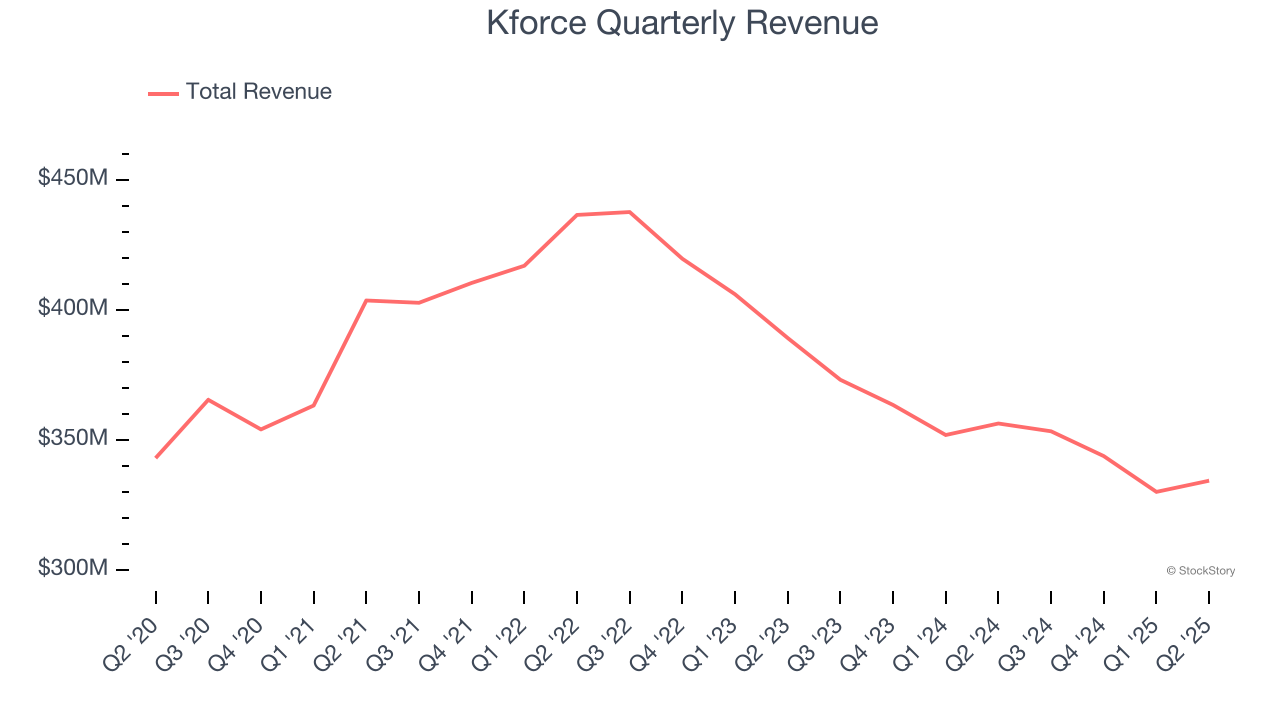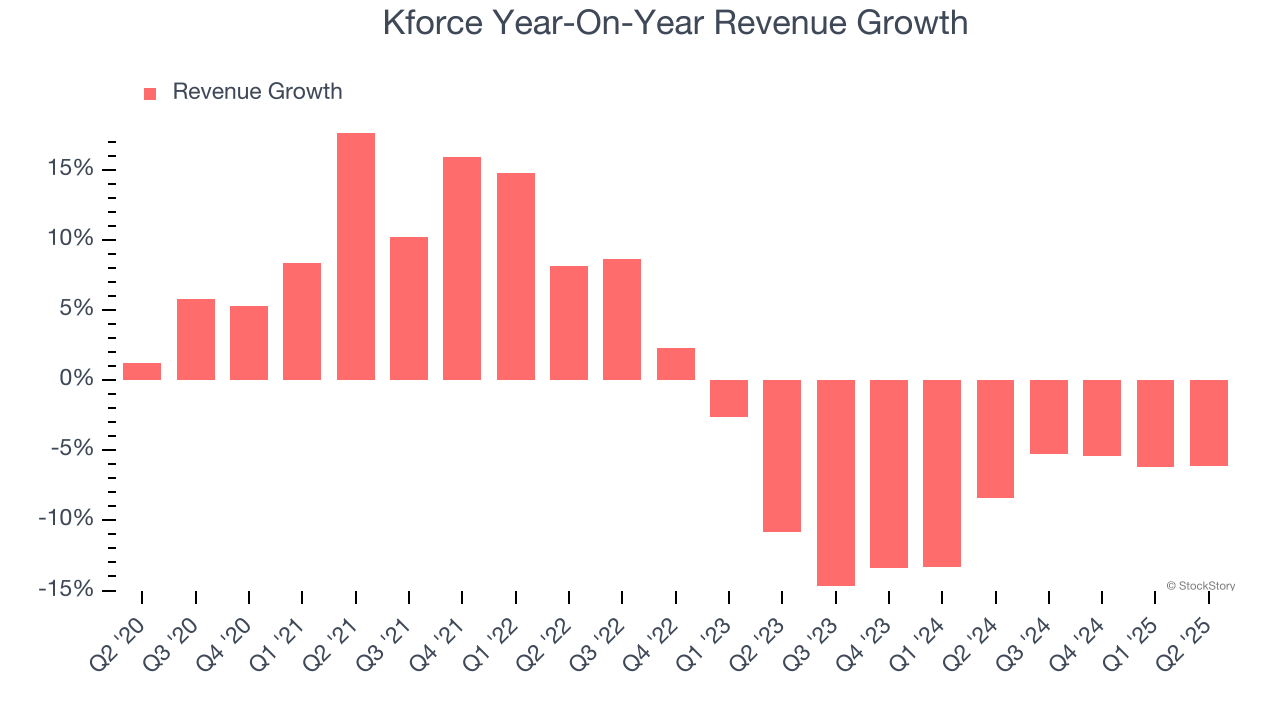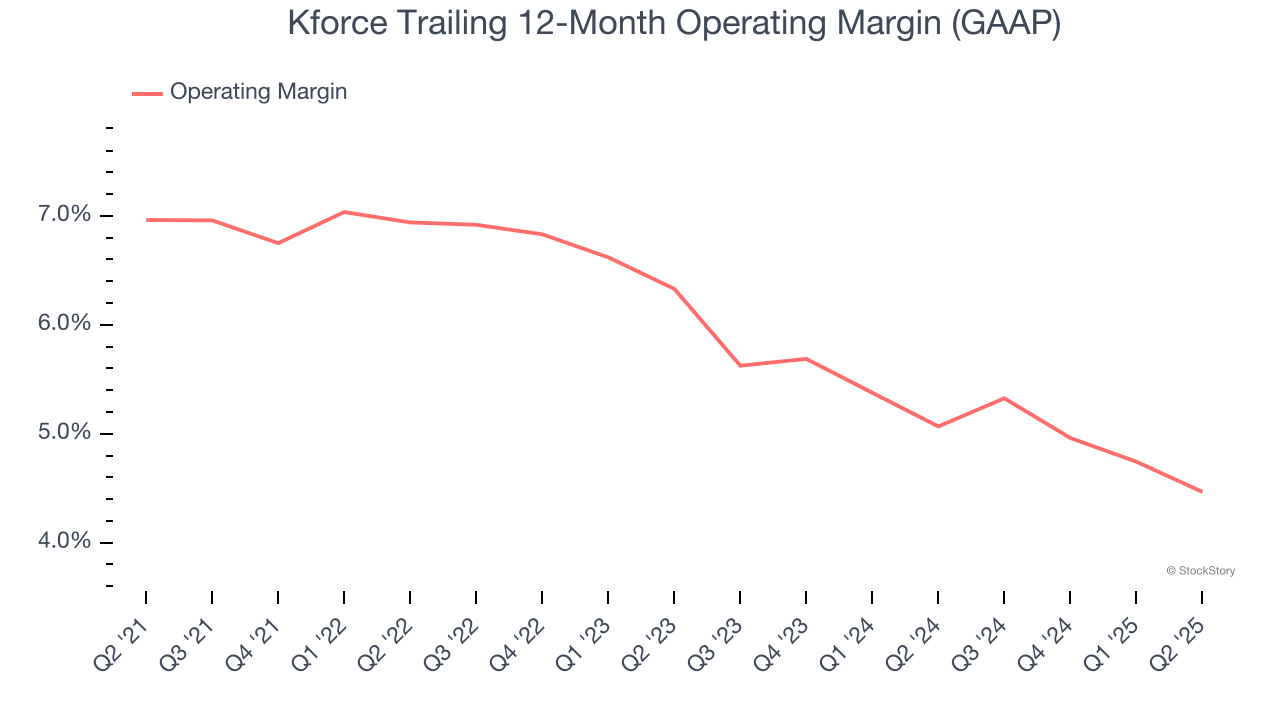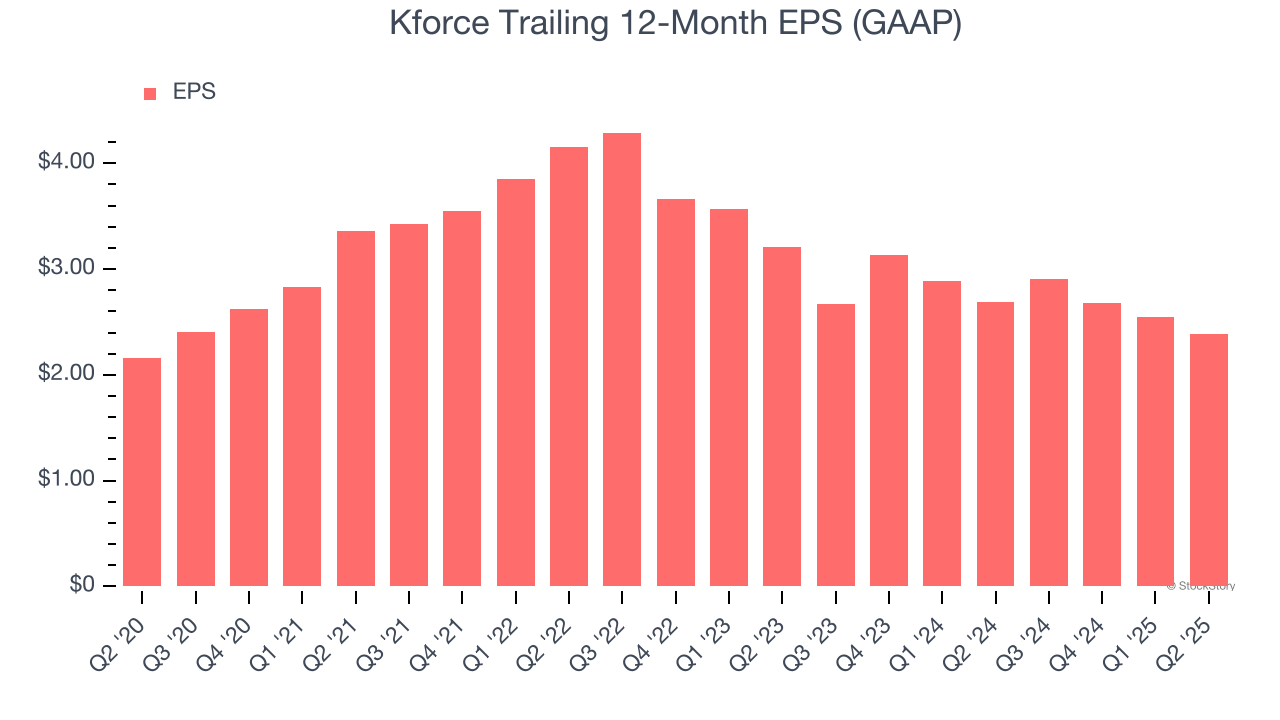
Professional staffing firm Kforce (NYSE:KFRC) met Wall Street’s revenue expectations in Q2 CY2025, but sales fell by 6.2% year on year to $334.3 million. On the other hand, next quarter’s revenue guidance of $328 million was less impressive, coming in 2% below analysts’ estimates. Its GAAP profit of $0.59 per share was in line with analysts’ consensus estimates.
Is now the time to buy Kforce? Find out by accessing our full research report, it’s free.
Kforce (KFRC) Q2 CY2025 Highlights:
- Revenue: $334.3 million vs analyst estimates of $335.4 million (6.2% year-on-year decline, in line)
- EPS (GAAP): $0.59 vs analyst estimates of $0.59 (in line)
- Adjusted EBITDA: $19.89 million vs analyst estimates of $20.29 million (5.9% margin, 2% miss)
- Revenue Guidance for Q3 CY2025 is $328 million at the midpoint, below analyst estimates of $334.6 million
- EPS (GAAP) guidance for Q3 CY2025 is $0.57 at the midpoint, missing analyst estimates by 7.2%
- Operating Margin: 4.5%, down from 5.5% in the same quarter last year
- Free Cash Flow Margin: 4.3%, similar to the same quarter last year
- Market Capitalization: $823 million
Company Overview
With nearly 60 years of matching skilled professionals with the right opportunities, Kforce (NYSE:KFRC) is a professional staffing company that specializes in placing technology and finance experts with businesses on both temporary and permanent bases.
Revenue Growth
A company’s long-term sales performance can indicate its overall quality. Even a bad business can shine for one or two quarters, but a top-tier one grows for years.
With $1.36 billion in revenue over the past 12 months, Kforce is a small player in the business services space, which sometimes brings disadvantages compared to larger competitors benefiting from economies of scale and numerous distribution channels.
As you can see below, Kforce struggled to increase demand as its $1.36 billion of sales for the trailing 12 months was close to its revenue five years ago. This shows demand was soft, a tough starting point for our analysis.

We at StockStory place the most emphasis on long-term growth, but within business services, a half-decade historical view may miss recent innovations or disruptive industry trends. Kforce’s recent performance shows its demand remained suppressed as its revenue has declined by 9.2% annually over the last two years. 
This quarter, Kforce reported a rather uninspiring 6.2% year-on-year revenue decline to $334.3 million of revenue, in line with Wall Street’s estimates. Company management is currently guiding for a 7.2% year-on-year decline in sales next quarter.
Looking further ahead, sell-side analysts expect revenue to decline by 1.8% over the next 12 months. While this projection is better than its two-year trend, it’s hard to get excited about a company that is struggling with demand.
Here at StockStory, we certainly understand the potential of thematic investing. Diverse winners from Microsoft (MSFT) to Alphabet (GOOG), Coca-Cola (KO) to Monster Beverage (MNST) could all have been identified as promising growth stories with a megatrend driving the growth. So, in that spirit, we’ve identified a relatively under-the-radar profitable growth stock benefiting from the rise of AI, available to you FREE via this link.
Operating Margin
Kforce was profitable over the last five years but held back by its large cost base. Its average operating margin of 6% was weak for a business services business.
Looking at the trend in its profitability, Kforce’s operating margin decreased by 2.5 percentage points over the last five years. Kforce’s performance was poor no matter how you look at it - it shows that costs were rising and it couldn’t pass them onto its customers.

This quarter, Kforce generated an operating margin profit margin of 4.5%, down 1.1 percentage points year on year. This reduction is quite minuscule and indicates the company’s overall cost structure has been relatively stable.
Earnings Per Share
We track the long-term change in earnings per share (EPS) for the same reason as long-term revenue growth. Compared to revenue, however, EPS highlights whether a company’s growth is profitable.
Kforce’s weak 2% annual EPS growth over the last five years aligns with its revenue performance. This tells us it maintained its per-share profitability as it expanded.

Like with revenue, we analyze EPS over a more recent period because it can provide insight into an emerging theme or development for the business.
Kforce’s two-year annual EPS declines of 13.8% were bad and lower than its two-year revenue performance.
We can take a deeper look into Kforce’s earnings to better understand the drivers of its performance. Kforce’s operating margin has declined by 2.2 percentage points over the last two years. This was the most relevant factor (aside from the revenue impact) behind its lower earnings; interest expenses and taxes can also affect EPS but don’t tell us as much about a company’s fundamentals.
In Q2, Kforce reported EPS at $0.59, down from $0.75 in the same quarter last year. This print was close to analysts’ estimates. Over the next 12 months, Wall Street expects Kforce’s full-year EPS of $2.39 to grow 2%.
Key Takeaways from Kforce’s Q2 Results
We struggled to find many positives in these results. Its EPS guidance for next quarter missed and its revenue guidance for next quarter fell short of Wall Street’s estimates. Overall, this quarter could have been better. The stock traded down 8.3% to $43 immediately following the results.
Kforce may have had a tough quarter, but does that actually create an opportunity to invest right now? When making that decision, it’s important to consider its valuation, business qualities, as well as what has happened in the latest quarter. We cover that in our actionable full research report which you can read here, it’s free.
